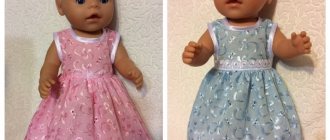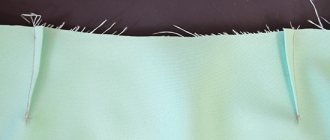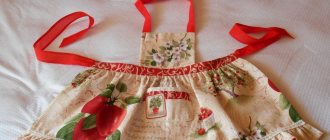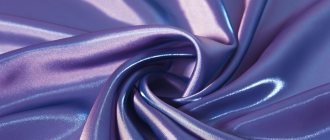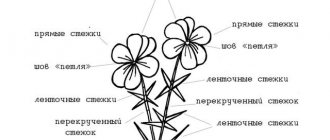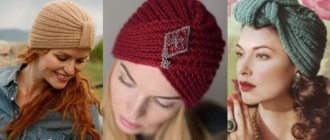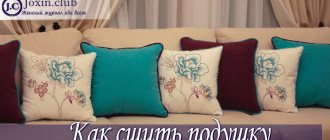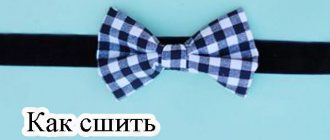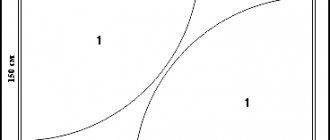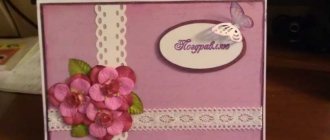Not every woman can quickly and easily choose an outfit, especially if she wears size + clothes. This is explained by the fact that the sizes of things are very average, but the figures of women are individual. For example, when buying a skirt, it is often difficult to choose the right length and width of the belt. A skirt made to individual measurements will decorate any woman’s wardrobe, but what to do if you can’t go to a tailor. The solution to the problem is to sew a skirt for plus size people quickly and easily with your own hands. Below you will find step-by-step instructions for sewing skirts for plus size women with illustrations.
A good option for plus size women would be a straight skirt. In this case, you should choose a length either to the knee or to the toes. A different length will “split” the figure so that the figure appears fuller than it actually is.
If the owner of a curvaceous figure can boast of being tall, then a long skirt - a year - will suit her. Those who are not tall should be careful with this style. Short skirts of this style are not suitable for everyone.
You can adjust your figure with a flared skirt. This style suits absolutely everyone. The main thing is to choose the right length. The correct length for bunnies is below the knee. A full-length skirt made from thin fabrics will look most advantageous on short, plump women. It will flow gently over the figure and visually elongate the figure. This skirt is perfect for summer. Let's look at a few examples of flared skirts.
How to create a floor-length skirt pattern
First we need to decide on the fabric. It is desirable that it stretches in the transverse direction. Otherwise, the skirt will hinder movement.
To calculate fabric consumption, add two lengths of the skirt and add 20 cm (with a fabric width of 140-145 cm). For example, if the length of your skirt is 90 cm, then you will need: 90 + 90 + 20 = 200 cm, i.e. 2 meters.
Option number 1: according to the recommendations of the sewing blog so-sew-easy.com
Required measurements:
- Waist circumference,
- Hip circumference (optional measurement, needed for verification),
- Length from waist to outer foot.
- Step length (needed so that the skirt does not hinder movement).
With the first three measures, I think there should be no questions. But to measure the length of the step, or rather, it would be even better to say the circumference, you need to take your usual step and measure the circumference with a centimeter tape, clasping your ankles.
On fabric folded in half, set aside a quarter of the OT on top, for example, if your waist is 68 cm, then you will need to set aside 17 cm + seam allowance.
Set aside measurements and draw lines
We set aside the length along the fold line, for example 90 cm. From the resulting point we set aside a quarter of the step circumference. So, if your measurement of this value was 88 cm, then you will need to set aside at least 22 cm. Of course, you can measure more, but if you take a smaller segment, keep in mind that walking in a skirt will not be very comfortable. To correct the situation, you will have to make a cut, but we sew without it.
Finally, check to see if the skirt is tight at the hips. To do this, measure approximately 18-20 cm below the waist and measure the width in this area, it should be at least a quarter of the circumference of your hips. If you have a narrow waist and very wide hips, you will have to slightly increase the waist mark and increase the width of the lower section by the same amount.
Method No. 2. According to the method of Marlene Mukai.
Marlene Mukai suggests creating a long skirt pattern using the hip circumference as a basis. Below are drawings of such skirts. We see that initially a rectangle is drawn, the width of which is a quarter of the OB. We measure a quarter OT from the top, and another quarter OB is laid down from the edge of the rectangle. The edges of the skirt need to be slightly rounded. In my opinion, Marlene Mukai’s patterns are one of the most accurate and at the same time simple. By the way, all measurements in the drawings are indicated taking into account allowances. Size chart below.
Maxi skirt and patterns from Marlene Mukai
How to sew a maxi skirt
Cut out the pattern pieces. Place them right sides together and sew the side seams. Fold the bottom.
To process the top, cut a strip of fabric, the length of which will be equal to OT, the width will be approximately 20 cm. Fold it in half and sew it to the upper section of the skirt. If you have very wide hips and the fabric is not elastic, you can cut a longer strip and then insert an elastic band into it or sew on rubber veins.
Fashionable looks
Every year, fashion designers present new collections, which necessarily include elegant godet skirts, suitable for women of any age and body type. Bohemian floor-length products are amazing with their wonderful properties to transform the figure, adding elegance and grace to the silhouette . Versatile midi with ruffles, decorated with inserts and appliqués, add charm and luxury to a woman's look. A cute and elegant product requires a special cut, so the advice of stylists and your own intuition will come in handy when creating a fashionable look.
What to wear with a skirt? Considering whether the skirt belongs to a classic or urban style, you should choose elegant items in a sophisticated design. Stylists recommend wearing a tight-fitting top without unnecessary decoration or short outerwear.
Clothing items that go with a year-over skirt:
- Strapless top.
- Asymmetrical tank top or T-shirt.
- Openwork fitted jacket.
- Blouse with long sleeves.
- Tunics.
- Short coat.
- Short coat.
If you want to create a harmonious look, you should not use blouses with a deep neckline and voluminous ruffles, flounces or frills. The top part can be tucked in and the waist can be emphasized with a tight belt. A tunic or loose blouse will help hide your protruding belly. Elements such as a fur vest, bolero, or short fur coat will add a special shine to the look. Every detail matters, so when creating a fashionable look, you need to take into account every detail.
Other options for maxi skirts
Here are some more options for long skirts. The size chart for these drawings is the same as for the Marlene Mukai patterns.
And in conclusion, as promised, I offer ready-made maxi skirt patterns; the file also contains a master class and a size table. Please note that all measurements in the table are in inches; to convert to cm, multiply by 2.54.
December 17, 2017
What skirts are suitable for plus size ladies?
Today there is a huge variety of skirt models on the market, which differ in the following characteristics:
Fashionable skirts for plus size women
There are many variations of skirts that are suitable for girls and women who have curvy figures. And in order for such a piece of clothing to decorate its owner, it should be chosen not only taking into account fashion trends, but also taking into account body types.
“Apple”: ladies with a protruding tummy can hide such a small flaw under a tutu or circle skirt that is fashionable this year.
“Pear”: if a representative of the fair sex has hip volume exceeding chest volume, you can balance the proportions with the help of a stylish wrap skirt or an A-line skirt.
“Hourglass”: since this type of figure is considered the standard, its owner can afford to wear absolutely any skirt. But in this case, a strict pencil skirt will look most advantageous.
“Rectangle”: representatives of the fair sex who do not have a pronounced waist need to artificially focus attention on it.
Accordingly, any skirt with elastic or a model with horizontal stripes in the waist area will look appropriate on such a girl.
Modern material
So, when choosing a skirt for the cold season, you should take a closer look at models made of velvet, viscose, thick knitwear and leather.
To sew trendy summer clothing, lace, silk, lightweight knitwear, chiffon and leather are used.
Undesirable models
Girls with an appetizing, curvaceous figure suit a variety of skirt models that make them even more feminine and attractive. But there are options that it is better to write off any overweight girl without exception.
- Bag skirts. The fact that such a model “hides” extra pounds is a big misconception. On the contrary, it will add several sizes.
- Low-waisted skirts. In most cases, it burdens the silhouette, which negatively affects the image as a whole.
- Skirt-pants. Ambiguous option. You can wear this style, but you need to choose it extremely carefully, since the wrong model can shorten your legs and make your figure heavier.
- Mini skirts. They suit only those who are very thin and slender; the “chubby” is made shapeless and unattractive
- Too narrow. They not only hinder movement and bring discomfort, but also highlight all the imperfections of the figure.
Stylish DIY skirt
Is it possible to buy yourself a new skirt almost every week? Of course, it is possible, but this kind of purchase will sooner or later ruin any girl.
What to do if you want to update your wardrobe, but don’t have money for shopping? Of course you have to sew!
Pattern of a straight summer skirt
A pattern is a sample of a future product, which is cut out of paper in accordance with the dimensions of the model. And the more complex a piece of clothing needs to be sewn, the more detailed the pattern the seamstress will need.
Material selection
If you want to narrow your silhouette as much as possible and create the visual effect of a graceful figure, use samples made from fabrics with the addition of polyester and elastin. Many elastic materials have a tightening effect - synthetic acrylic, polyamide, denim, viscose. It is better to opt for smooth fabrics without a relief pattern. Such materials do not add extra centimeters and perfectly fit the silhouette. You should not use samples made of corduroy or bouclé. Knitted items with openwork patterns will add pomp, which is unacceptable for overweight women .
